Yosemite National Park
25 Apr 2019
- Michelle Ho
We made it to the mecca of climbing: Yosemite. There is just so much climbing history here. It’s so exciting to think that we’re climbing the same rock and routes that legends established decades ago. And climbing history is still being made here!
I remember sitting at my desk in the District Attorney’s office watching the live stream of Tommy Caldwell and Kevin Jorgeson top out the Dawn Wall in 2015. The Dawn Wall is considered the hardest free climb (meaning done without aid), going 3000+ feet up a steep blank face of El Capitan in Yosemite. Back in 2012, Kevin Jorgeson came to WashU in St. Louis to give a talk about the project, which is the first time I had heard of it. I was just starting to get into rock climbing then, and didn’t quite know even where El Cap was or what trad climbing meant. Fast forward seven years, here we are.
Waterfalls and Valley Views
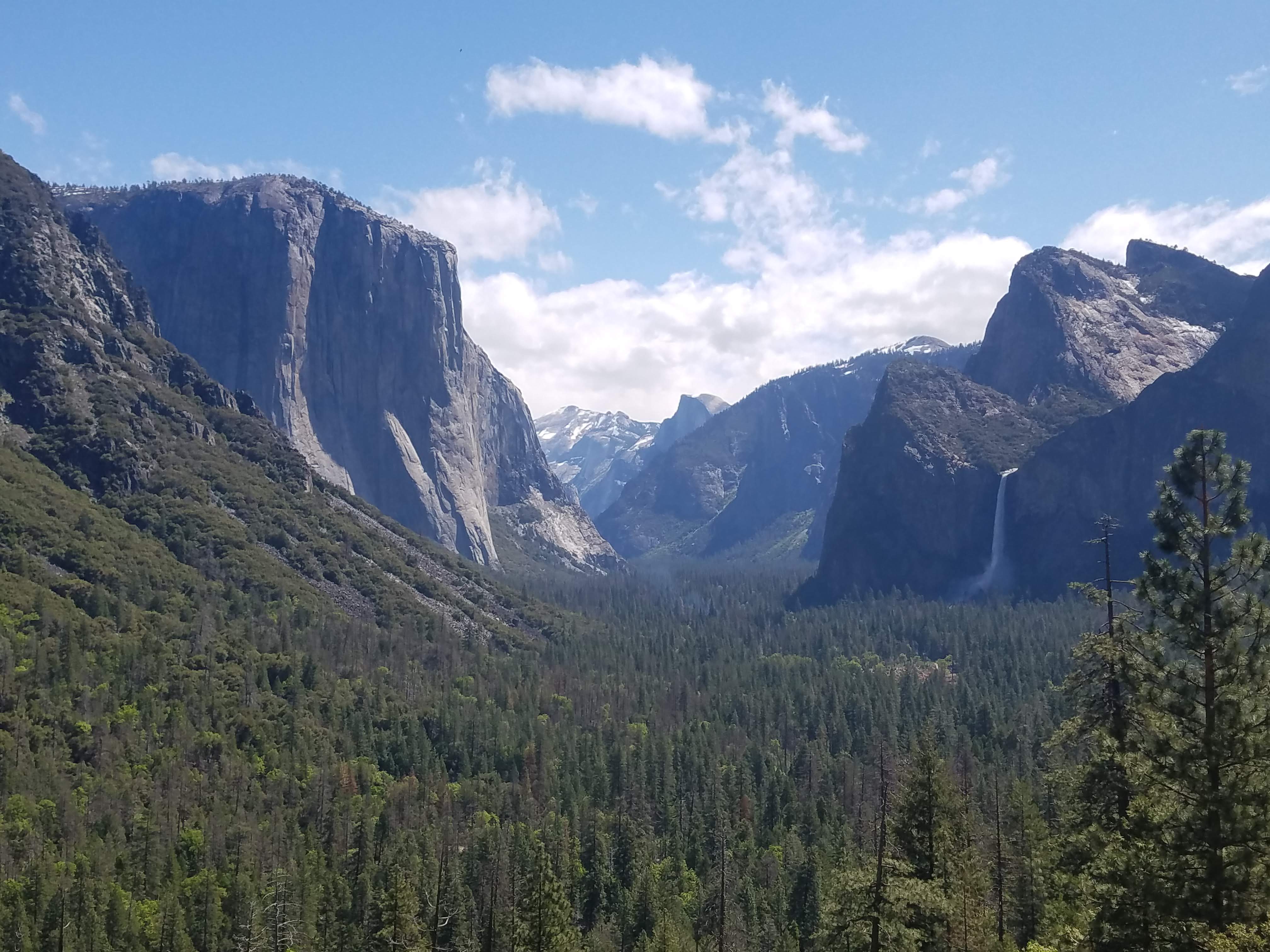 The grand reveal from Tunnel View. Driving from Wawona, you enter a tunnel which spirits you to this magical valley view. Bridalveil Fall, Half Dome, Glacier Point, and El Cap can be seen here.
The grand reveal from Tunnel View. Driving from Wawona, you enter a tunnel which spirits you to this magical valley view. Bridalveil Fall, Half Dome, Glacier Point, and El Cap can be seen here.
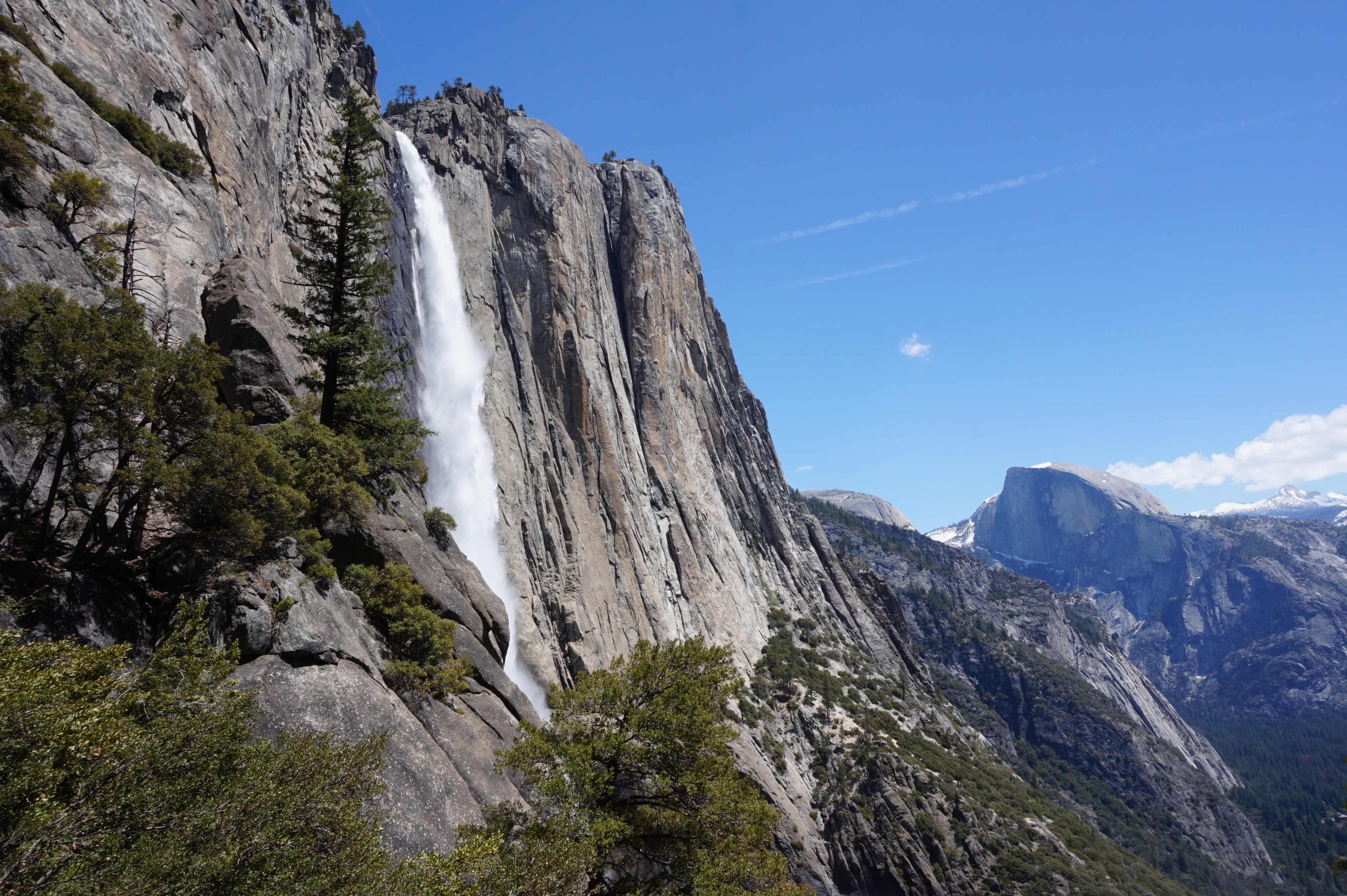 Yosemite Falls is the seventh longest waterfall in the world. When we arrived in Yosemite, all the waterfalls were going at full force. Our tow truck driver told us this is the best they've been in the last 8 years (Wait, what tow truck driver, you ask? Keep reading). It was amazing to just look around and count the numerous waterfalls cascading off cliffs and casting misty rainbows over the valley.
Yosemite Falls is the seventh longest waterfall in the world. When we arrived in Yosemite, all the waterfalls were going at full force. Our tow truck driver told us this is the best they've been in the last 8 years (Wait, what tow truck driver, you ask? Keep reading). It was amazing to just look around and count the numerous waterfalls cascading off cliffs and casting misty rainbows over the valley.
 We hiked to the top of Yosemite Falls.
We hiked to the top of Yosemite Falls.
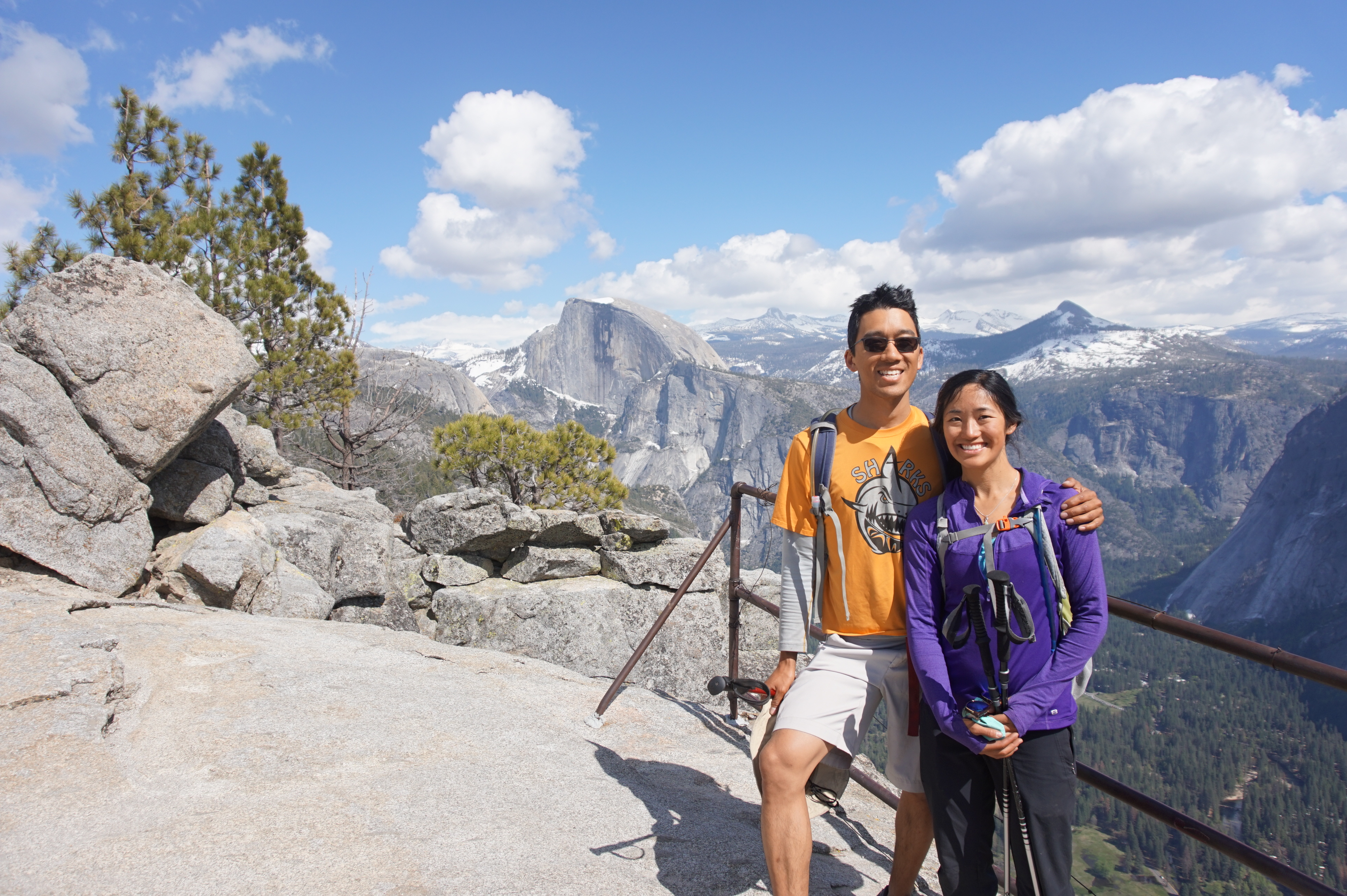 Us at Yosemite Point, above Yosemite Falls.
Us at Yosemite Point, above Yosemite Falls.
 We spotted a yellow-belly marmot at Yosemite Point! I also later saw a bear casually crossing the street near Half Dome Village, but wasn't quick enough to pull out my camera. Tourists and rangers chased after it.
We spotted a yellow-belly marmot at Yosemite Point! I also later saw a bear casually crossing the street near Half Dome Village, but wasn't quick enough to pull out my camera. Tourists and rangers chased after it.
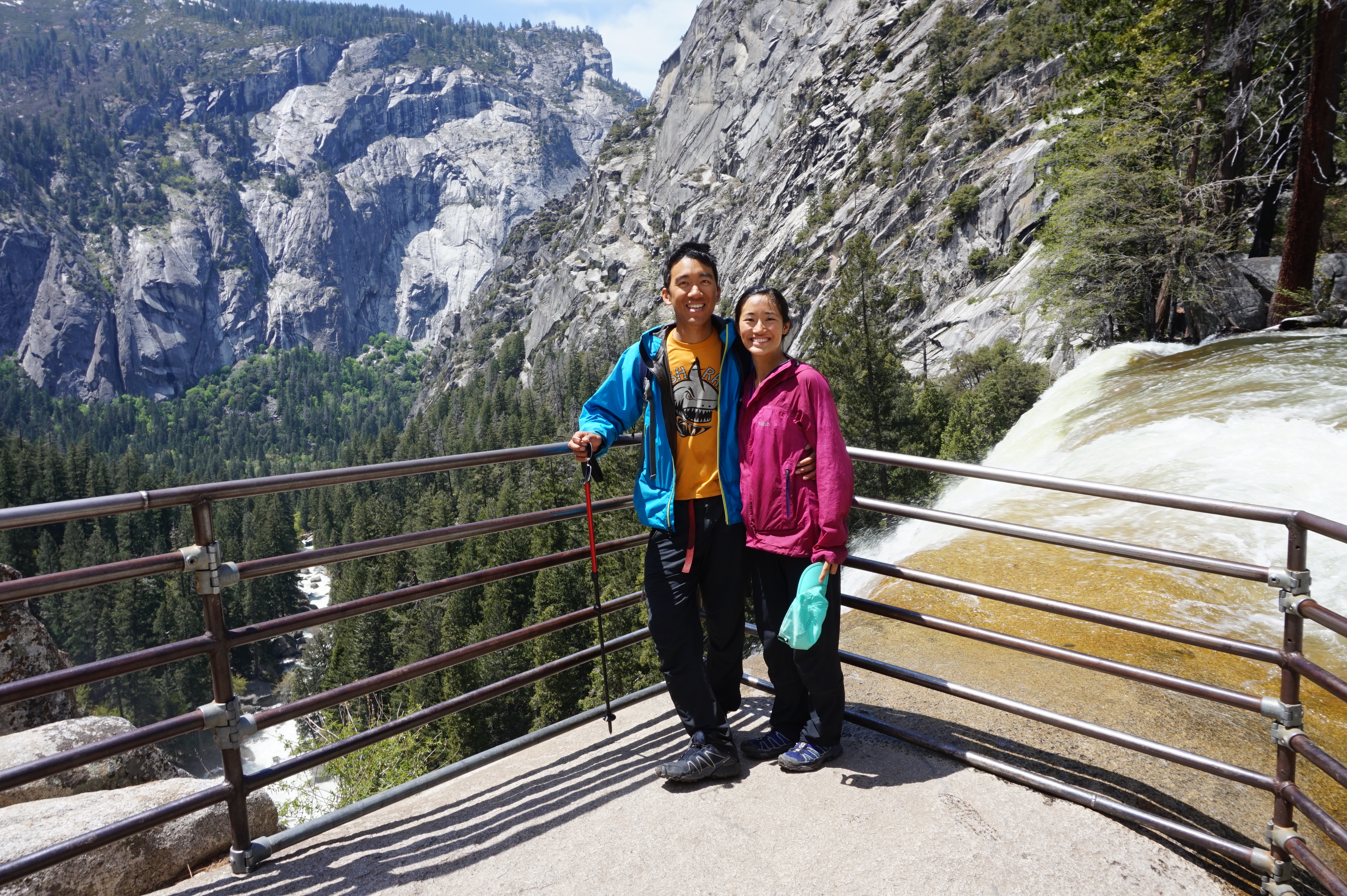 There are two more waterfalls behind Happy Isles and Half Dome. This is us at the top of Vernal Fall. We hiked the very, very wet and aptly named Mist Trail to get to this point.
There are two more waterfalls behind Happy Isles and Half Dome. This is us at the top of Vernal Fall. We hiked the very, very wet and aptly named Mist Trail to get to this point.
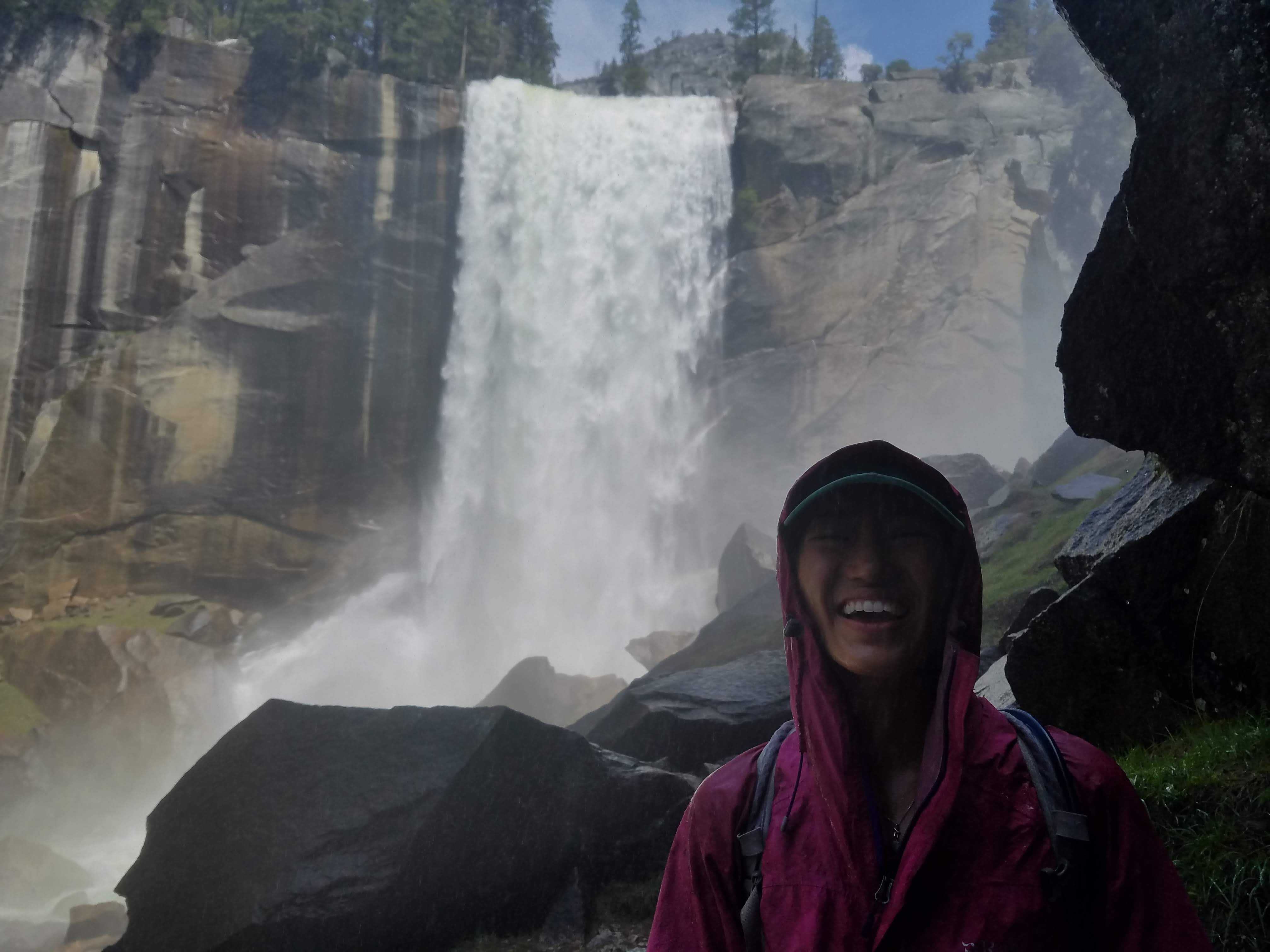 Umbrellas, raincoats, and rain pants recommended!
Umbrellas, raincoats, and rain pants recommended!
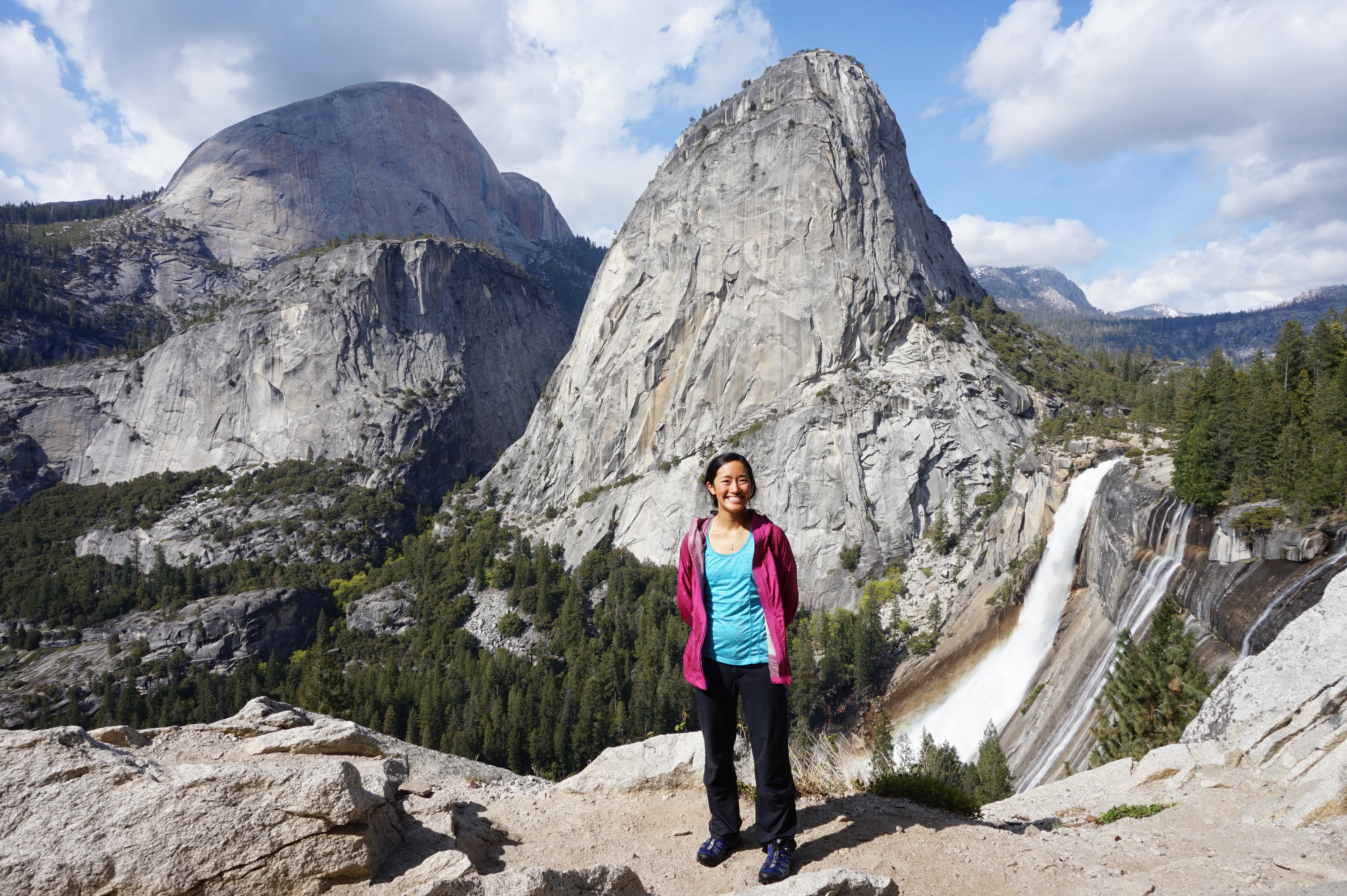 Further up the trail is the Nevada Fall. In the background is Liberty Cap and the backside of Half Dome. I opted to take the John Muir Trail instead of the Mist Trail back to Happy Isles, hoping it would be less wet. It was not.
Further up the trail is the Nevada Fall. In the background is Liberty Cap and the backside of Half Dome. I opted to take the John Muir Trail instead of the Mist Trail back to Happy Isles, hoping it would be less wet. It was not.
Camp 4
A few years ago, I was gifted Steve Roper’s book “Camp 4: Recollections of a Yosemite Rockclimber”, which I voraciously tore through and wondered when I’d ever go. Camp 4 has been home base for many legendary climbers for decades. To have stayed at Camp 4 is a dream come true.
 A typical evening at Camp 4: hundreds of tents, dozens of languages and accents, and stir-fry for dinner.
A typical evening at Camp 4: hundreds of tents, dozens of languages and accents, and stir-fry for dinner.
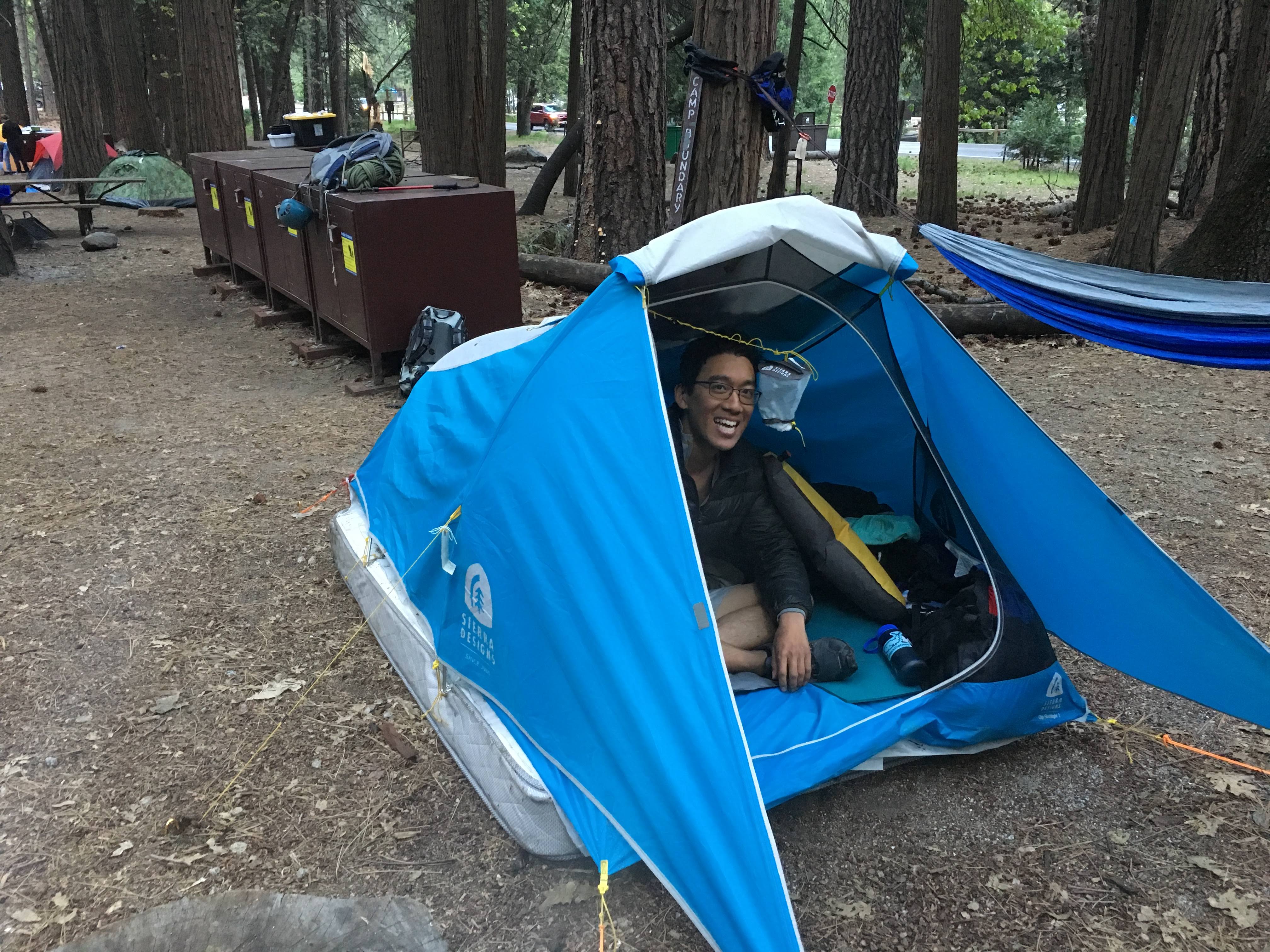 In the ultimate dirtbag move, we dragged a mattress we found by the dumpster and put it under our tent. We slept like kings for a couple nights.
In the ultimate dirtbag move, we dragged a mattress we found by the dumpster and put it under our tent. We slept like kings for a couple nights.
Yosemite Valley has a seven day camping limit from May through September. So how is it that we were able to wrangle eleven nights? Well, it turns out if you get two flat tires and have to get your car fixed at the Yosemite Valley Garage, then they give you a really nice note that explains to the campground ranger that you need to stay for a few more nights… which is exactly what happened to us. There are worse places in the world to be stranded.
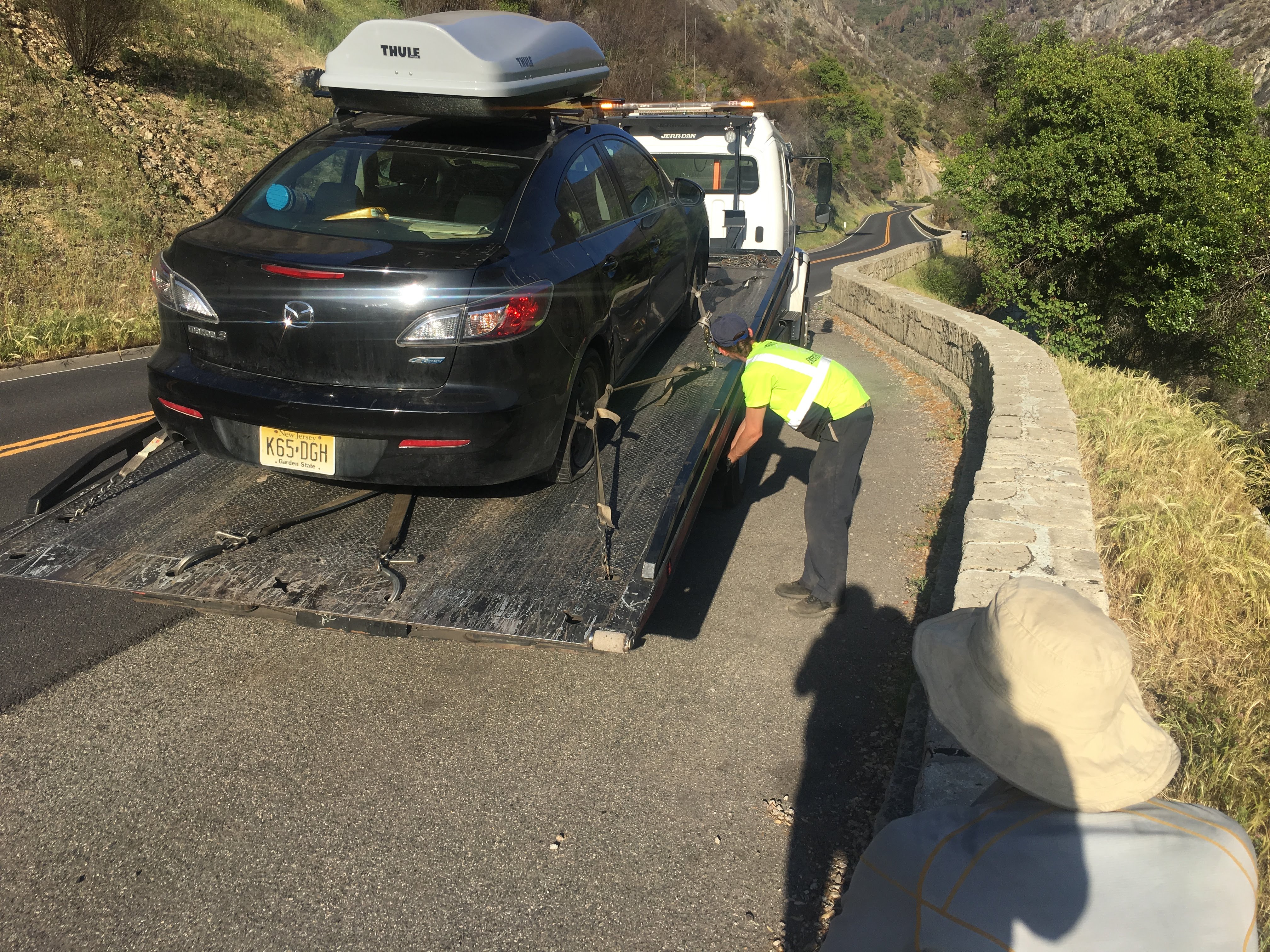 There is no shoulder on this narrow road from El Portal to Yosemite. Apparently, this happens to a lot of people (gorgeous views + narrow road + sharp curb = flat tires). The Yosemite Valley Garage and Kathy, the hotel operator, are heroes. We were able to get back on the road within a week.
There is no shoulder on this narrow road from El Portal to Yosemite. Apparently, this happens to a lot of people (gorgeous views + narrow road + sharp curb = flat tires). The Yosemite Valley Garage and Kathy, the hotel operator, are heroes. We were able to get back on the road within a week.
Rock Climbing
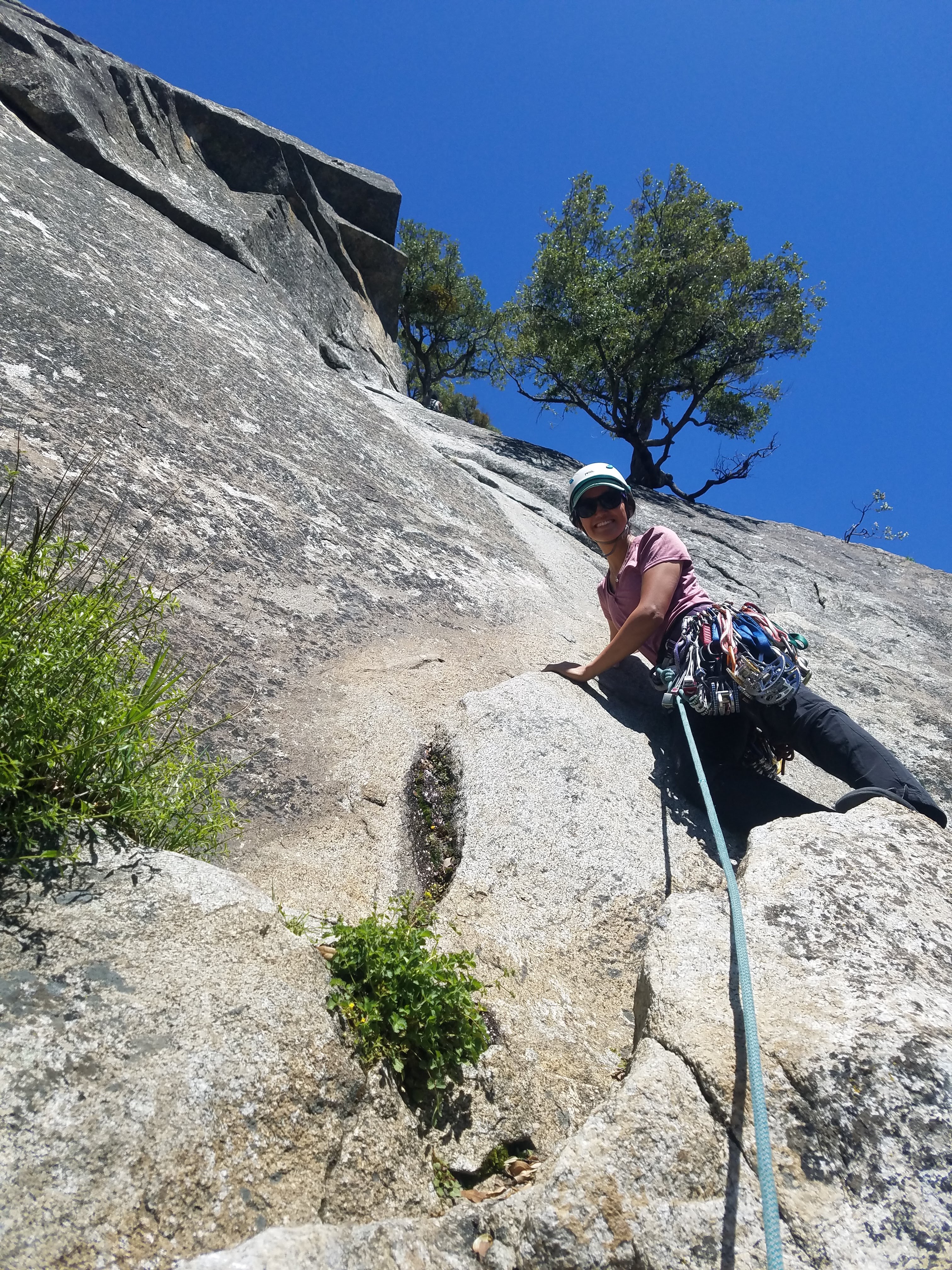 Our first climb in Yosemite was Munginella, a 5.6 two pitch climb. I'm not sure why it's called that, there was nothing 'munge' about it. I loved it.
Our first climb in Yosemite was Munginella, a 5.6 two pitch climb. I'm not sure why it's called that, there was nothing 'munge' about it. I loved it.
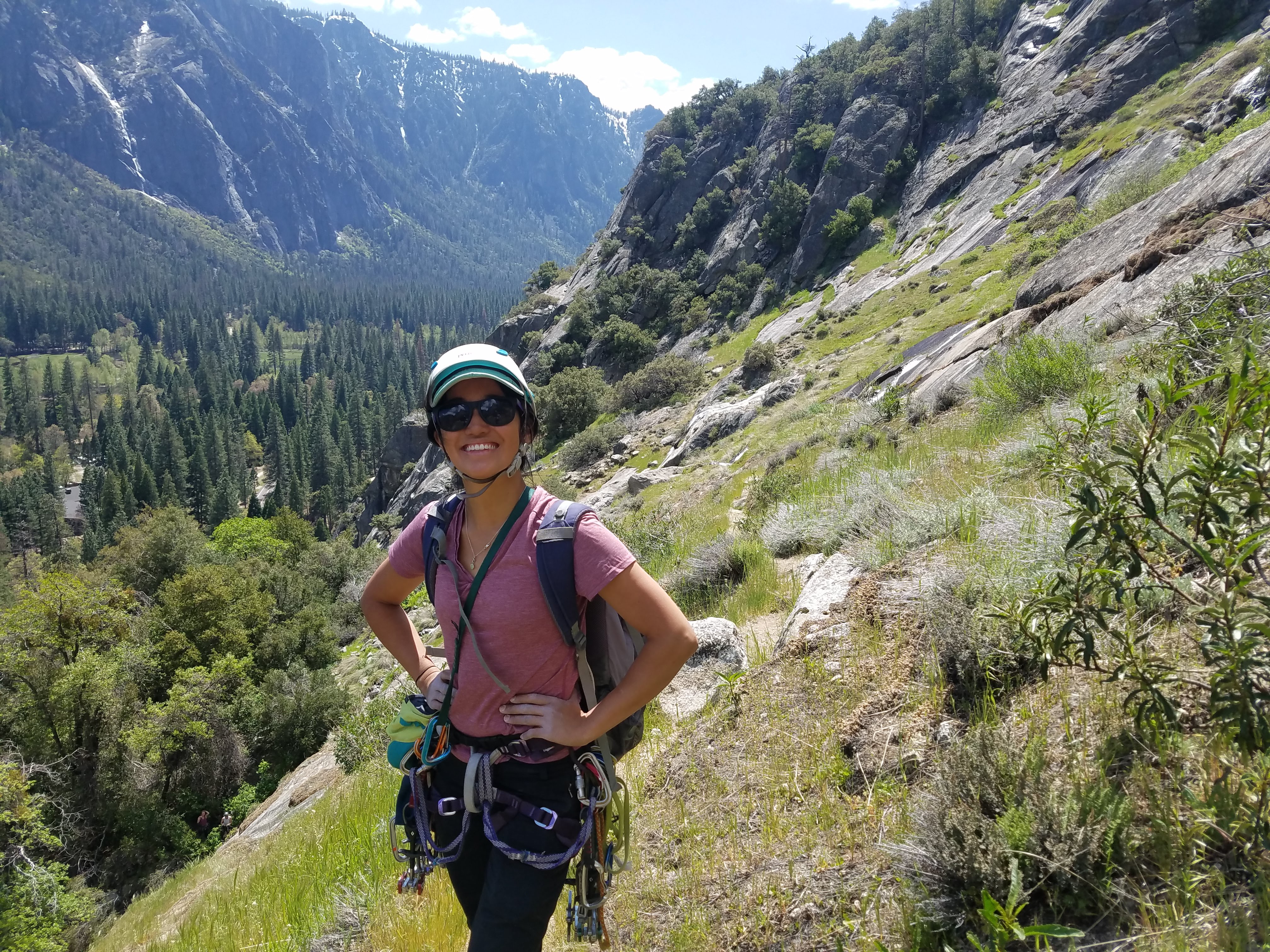 The descent from Munginella. After this beautiful goat trail, we rappeled down a small waterfall. Our rope got wet, but it was awesome.
The descent from Munginella. After this beautiful goat trail, we rappeled down a small waterfall. Our rope got wet, but it was awesome.
 Above Munginella is a climb called Selaginella. We came back a different day and climbed the whole thing (Caverns + Selaginella) in 9 pitches-- my longest climb yet!
Above Munginella is a climb called Selaginella. We came back a different day and climbed the whole thing (Caverns + Selaginella) in 9 pitches-- my longest climb yet!
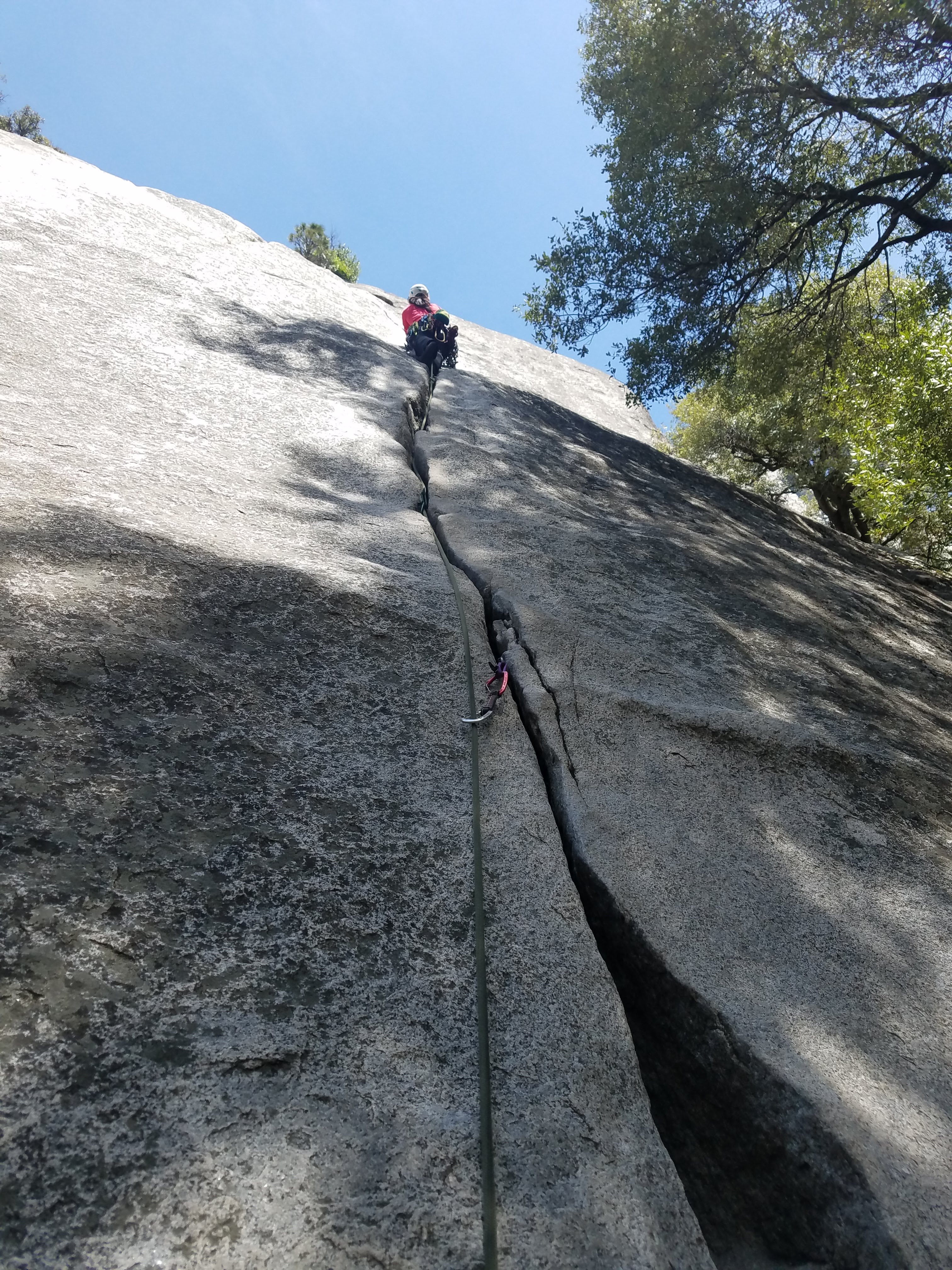 One of our Camp 4 neighbors had a book titled The Crack Climber's Technique Manual which I pretty much read in one night. I'm completely new to crack climbing, and this trip (especially Joshua Tree and Yosemite) has featured nothing but cracks. My favorite quote from the book is: ''Face climbing is climbing what is there. Crack climbing is climbing what is NOT there.'' So true. Crack climbing is just not intuitive. This is me leading Jam Crack, which I think is the first time I actually enjoyed climbing crack. My toes didn't hurt too much, the placements were easy, and the hand jams were solid.
One of our Camp 4 neighbors had a book titled The Crack Climber's Technique Manual which I pretty much read in one night. I'm completely new to crack climbing, and this trip (especially Joshua Tree and Yosemite) has featured nothing but cracks. My favorite quote from the book is: ''Face climbing is climbing what is there. Crack climbing is climbing what is NOT there.'' So true. Crack climbing is just not intuitive. This is me leading Jam Crack, which I think is the first time I actually enjoyed climbing crack. My toes didn't hurt too much, the placements were easy, and the hand jams were solid.
 I think this was taken from the top of Bishop Terrace, a great 5.8 crack climb that Geoff lead.
I think this was taken from the top of Bishop Terrace, a great 5.8 crack climb that Geoff lead.
 Our last day climbing at Yosemite, we climbed Nutcracker, a five pitch route which was originally climbed with only stoppers. We did it in six pitches, with cams.
Our last day climbing at Yosemite, we climbed Nutcracker, a five pitch route which was originally climbed with only stoppers. We did it in six pitches, with cams.
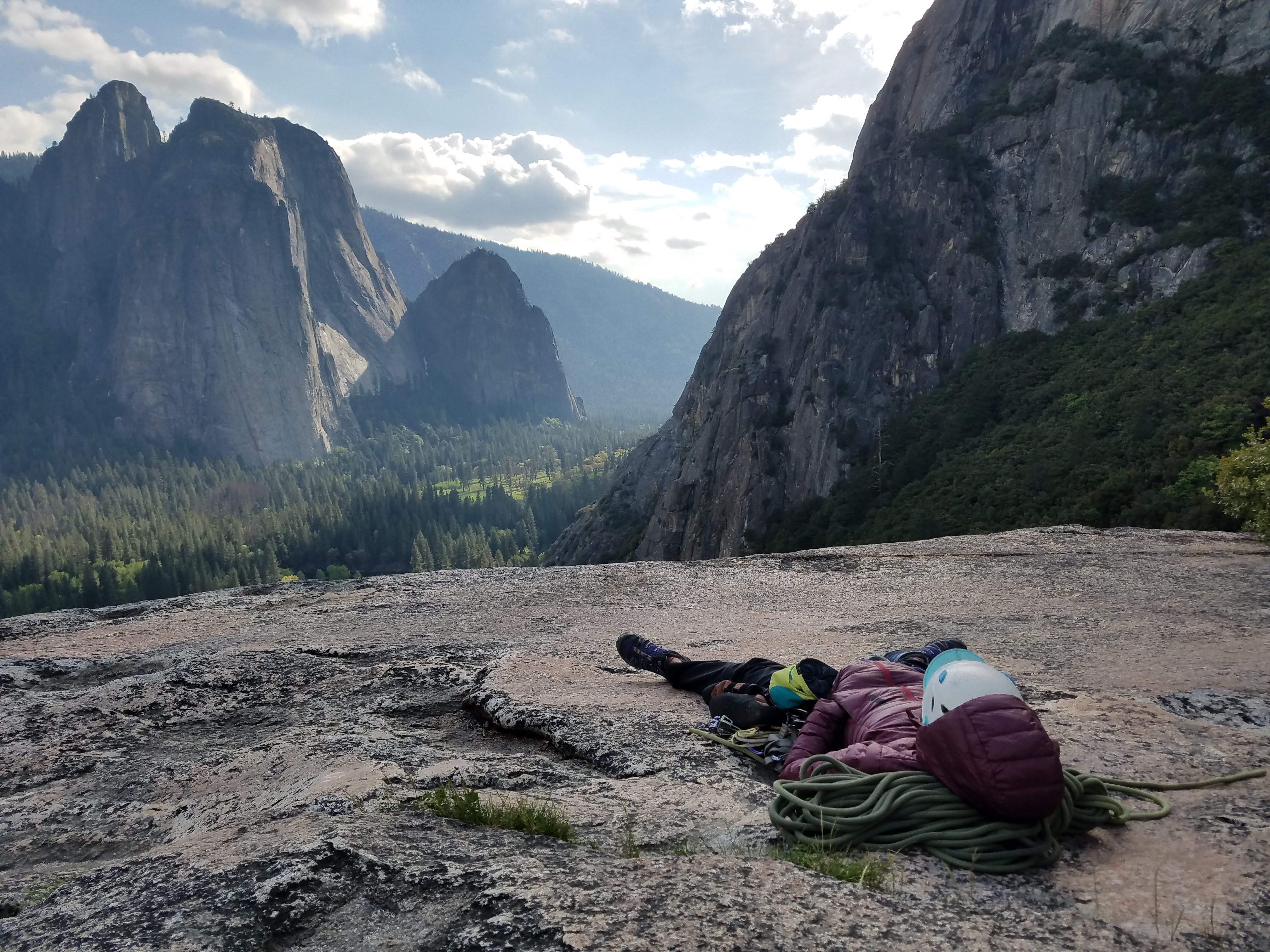 View from the top of Nutcracker. It seriously looks like the Land Before Time here, a few dinosaurs roaming the meadows would not be out of place here.
View from the top of Nutcracker. It seriously looks like the Land Before Time here, a few dinosaurs roaming the meadows would not be out of place here.
Mariposa Grove
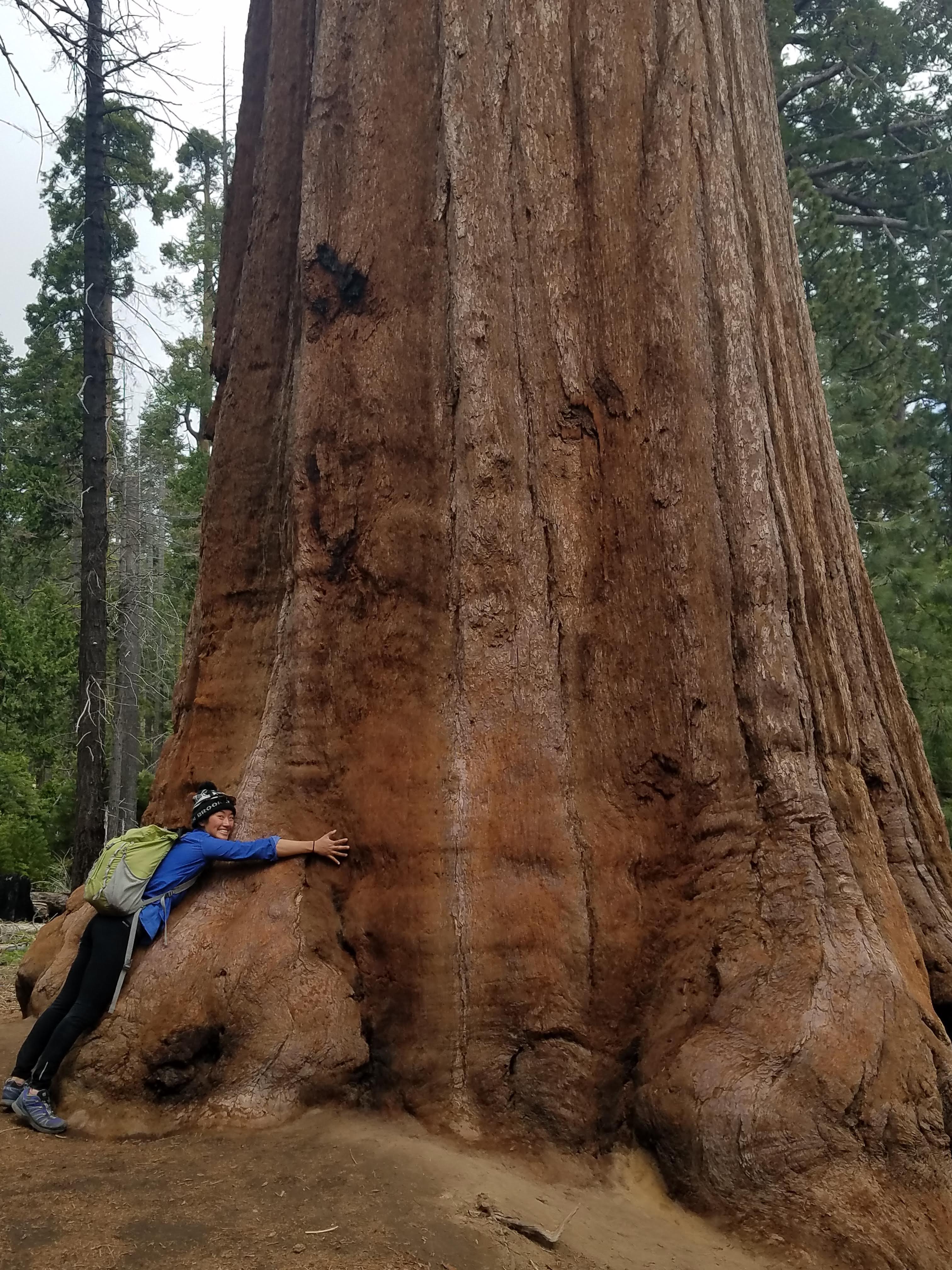 We saw coastal redwoods in Big Sur, and now we've seen their cousins, the Giant Sequoias, in Mariposa Grove in Yosemite! I stand corrected-- in the Big Sur post, I said Coastal Redwoods were shorter. Coastal Redwoods are, in fact, taller, but the Giant Sequoias are larger by mass!
We saw coastal redwoods in Big Sur, and now we've seen their cousins, the Giant Sequoias, in Mariposa Grove in Yosemite! I stand corrected-- in the Big Sur post, I said Coastal Redwoods were shorter. Coastal Redwoods are, in fact, taller, but the Giant Sequoias are larger by mass!
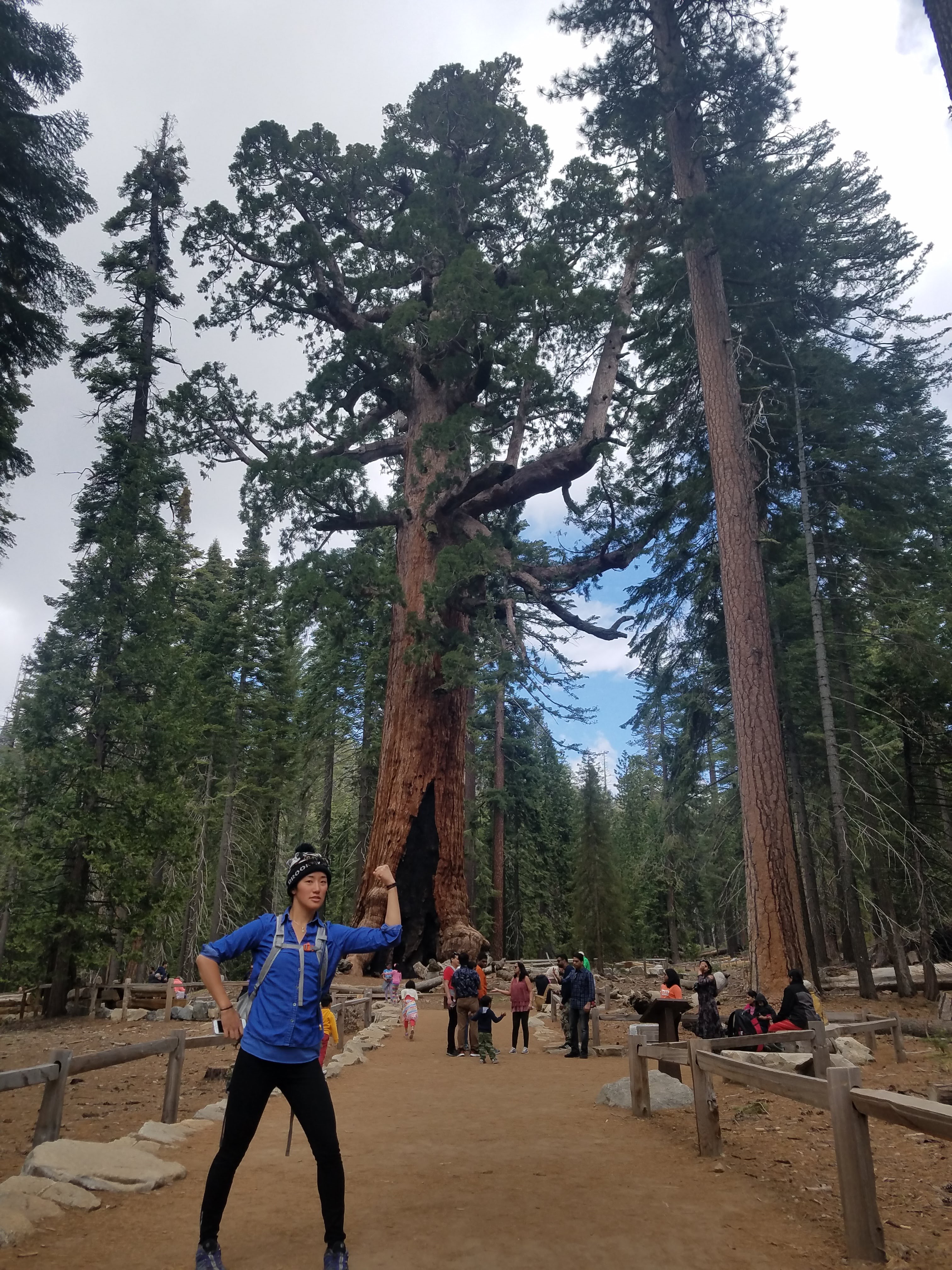 This tree is called the Grizzly Giant.
This tree is called the Grizzly Giant.
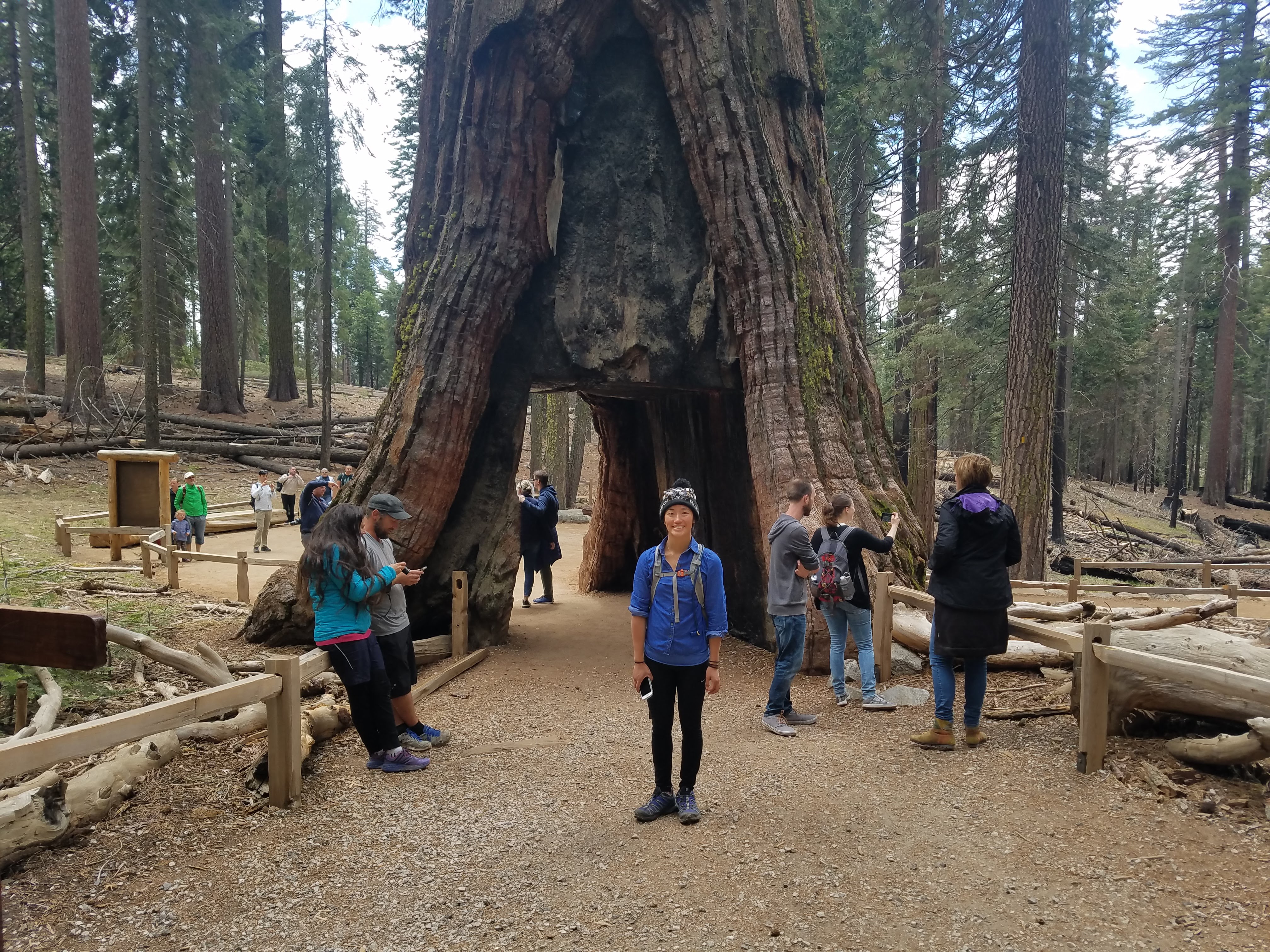 At some point a while ago, humans thought it would be cool to drill a tunnel through this poor tree. It's called the California Tunnel, and hundreds of tourists drove through it and carved their names into the wood. Now the tree is growing bark back around it, trying to cover the scar.
At some point a while ago, humans thought it would be cool to drill a tunnel through this poor tree. It's called the California Tunnel, and hundreds of tourists drove through it and carved their names into the wood. Now the tree is growing bark back around it, trying to cover the scar.
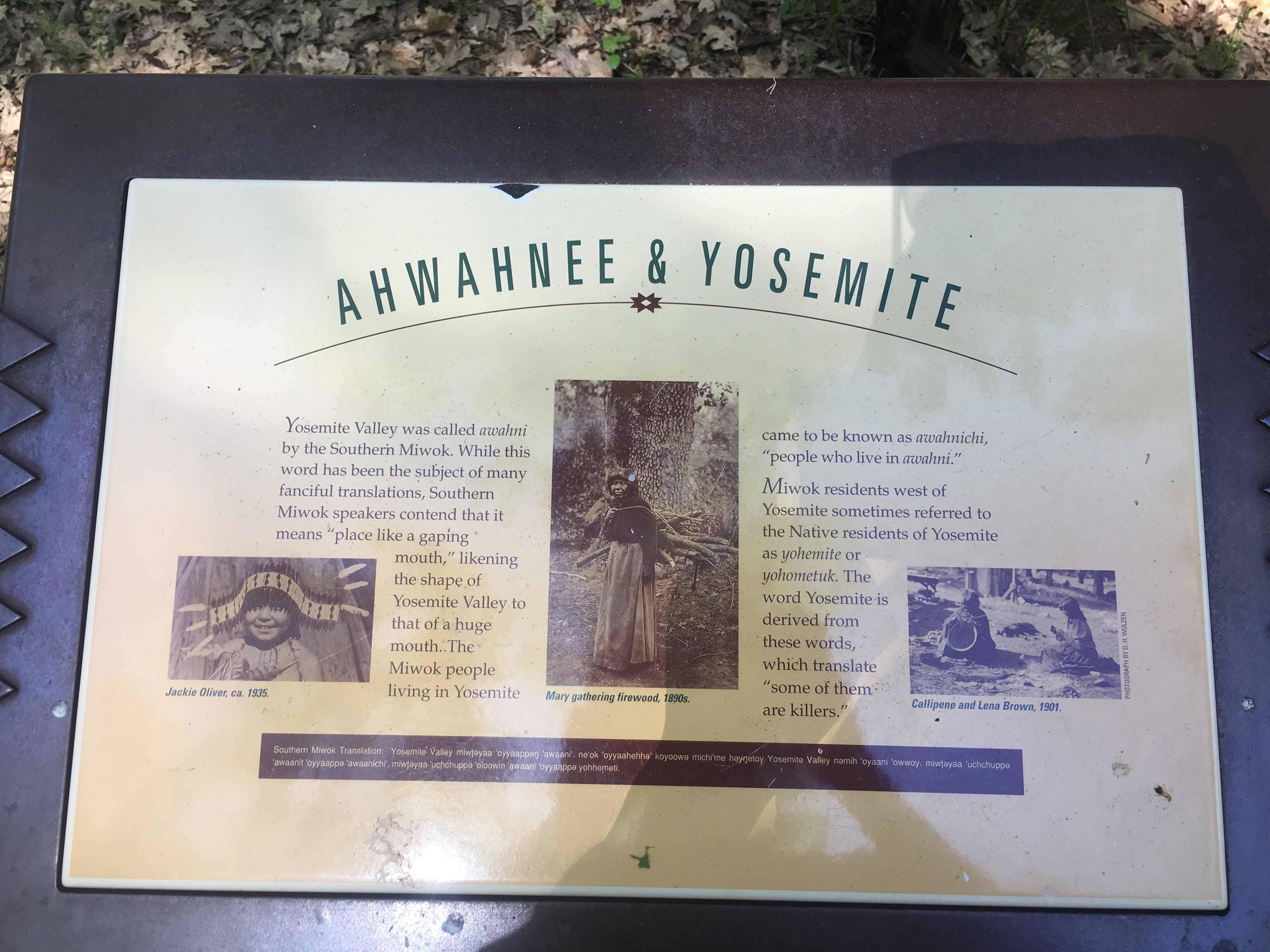 Finally some trivia! Why is Yosemite called Yosemite? The Miwok people living here called it Ahwahnee, meaning ''place like a gaping mouth''-- fair enough. But their neighbors called the natives here Yohemite, meaning ''some of them are killers''. Oh my.
Finally some trivia! Why is Yosemite called Yosemite? The Miwok people living here called it Ahwahnee, meaning ''place like a gaping mouth''-- fair enough. But their neighbors called the natives here Yohemite, meaning ''some of them are killers''. Oh my.





















